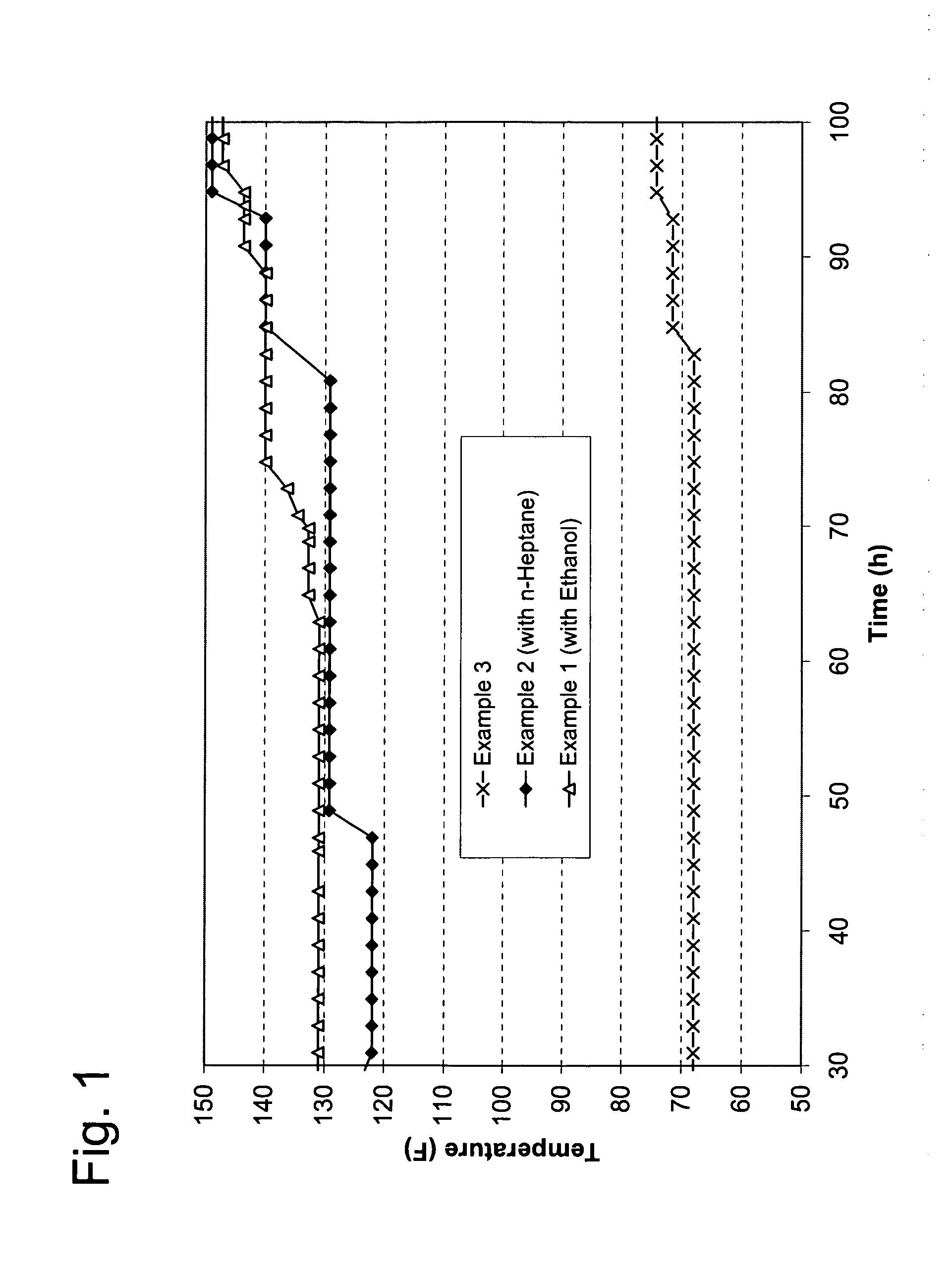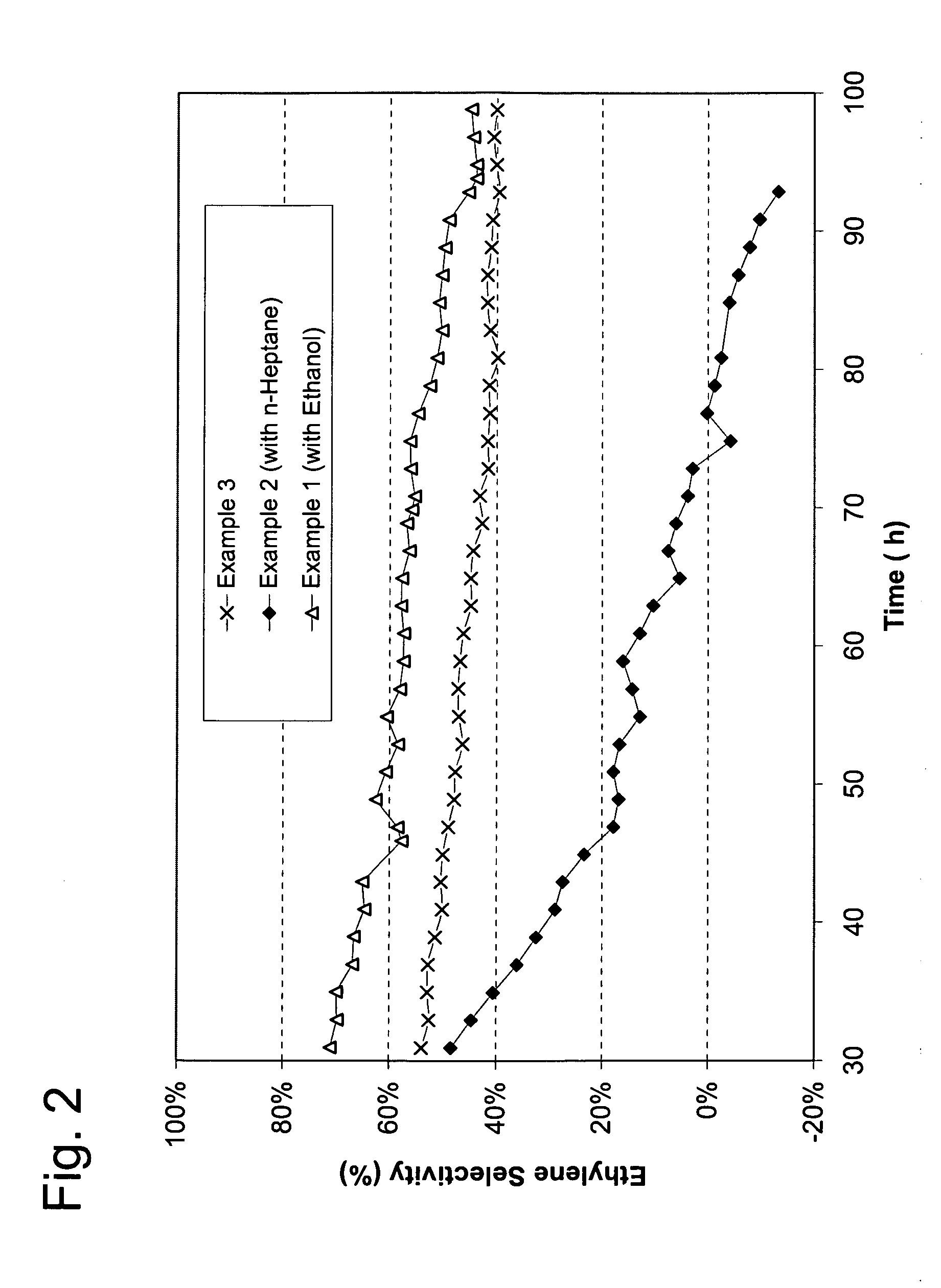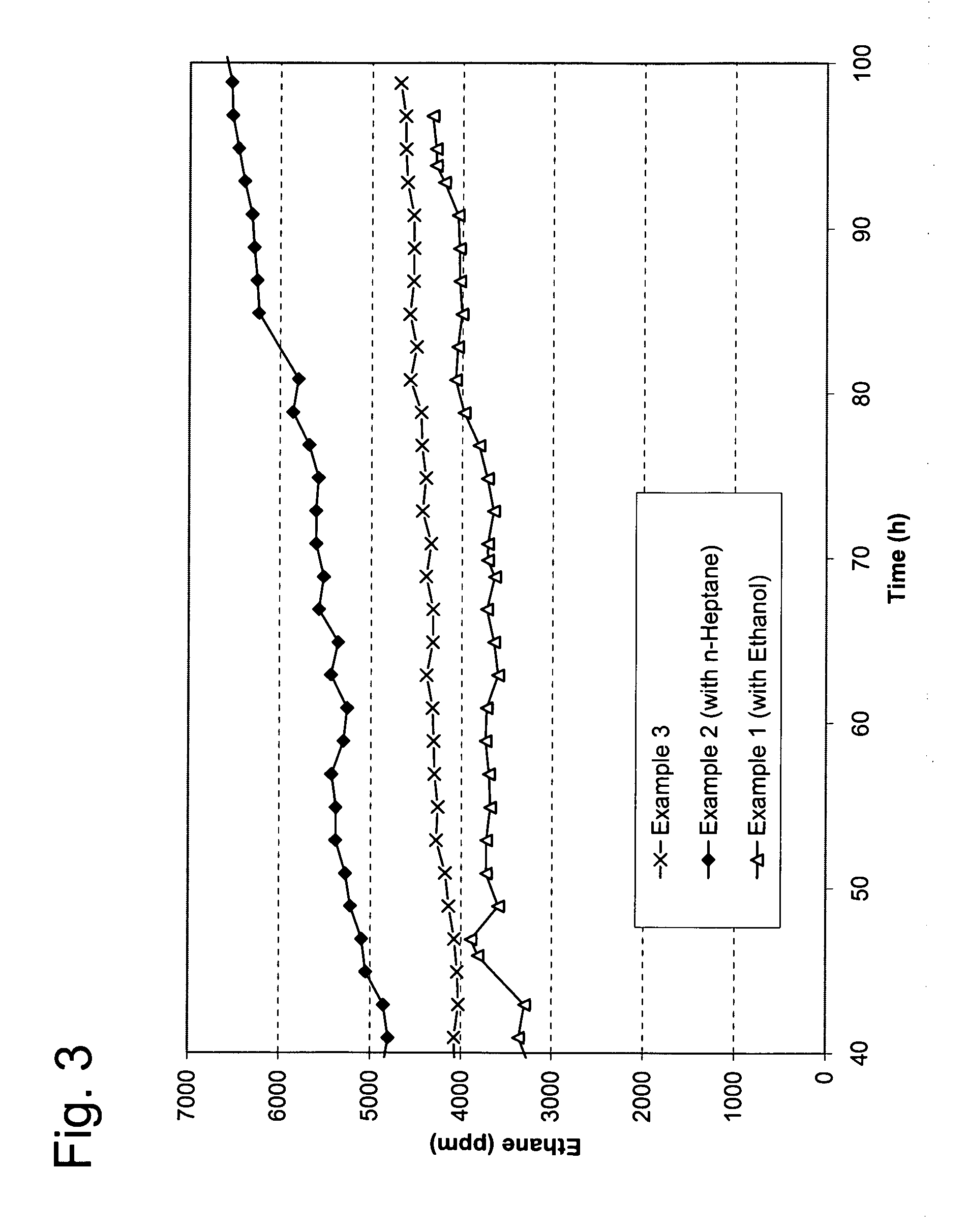Catalytic hydrogenation process
a hydrogenation process and catalyst technology, applied in the field of catalytic hydrogenation process, can solve the problems of catalyst deactivation and continue to be a problem, and achieve the effect of reducing catalyst deactivation and improving the selectivity of hydrogenation
- Summary
- Abstract
- Description
- Claims
- Application Information
AI Technical Summary
Benefits of technology
Problems solved by technology
Method used
Image
Examples
example 1
[0027]A spherical catalyst containing 0.03 wt % Pd and 0.18 wt % Ag supported on alumina (average particle diameter 4.0 mm, surface area 150 m2 / g, 15 mL) is charged into a tubular reactor (ID 0.75 inch). A gas mixture containing ethylene, 1 mol % acetylene, and 1.3 mol % hydrogen is fed to the reactor. The pressure is controlled at 300 psig. The gas hourly space velocity is at 3000 h−1. Ethanol is fed to the reactor at a flow rate of 0.74 mL / min. The weight ratio of ethanol to ethylene is about 1:1. The reaction temperature is adjusted so the acetylene conversion is maintained at about 70%. The average temperature of the bed as a function of the reaction time is shown in FIG. 1. The selectivity from acetylene to ethylene is shown in FIG. 2. The concentration of ethane in the reactor effluent is shown in FIG. 3.
PUM
| Property | Measurement | Unit |
|---|---|---|
| wt % | aaaaa | aaaaa |
| boiling point | aaaaa | aaaaa |
| pressure | aaaaa | aaaaa |
Abstract
Description
Claims
Application Information
 Login to View More
Login to View More - R&D
- Intellectual Property
- Life Sciences
- Materials
- Tech Scout
- Unparalleled Data Quality
- Higher Quality Content
- 60% Fewer Hallucinations
Browse by: Latest US Patents, China's latest patents, Technical Efficacy Thesaurus, Application Domain, Technology Topic, Popular Technical Reports.
© 2025 PatSnap. All rights reserved.Legal|Privacy policy|Modern Slavery Act Transparency Statement|Sitemap|About US| Contact US: help@patsnap.com



